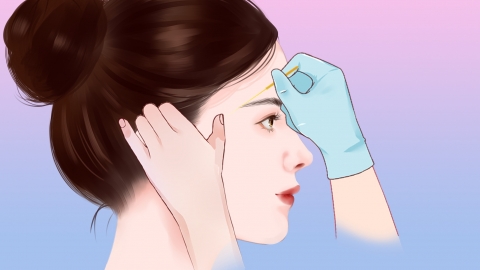Why do pimples appear on the temples?
Generally speaking, breaking out refers to the occurrence of acne. Acne on the temples may be caused by staying up late, improper diet, folliculitis, seborrheic dermatitis, or polycystic ovary syndrome (PCOS). It is recommended to seek timely medical attention at a qualified hospital for examination and treatment. Detailed explanations are as follows:

1. Staying up late
Staying up late may cause endocrine disorders and elevate androgen levels, which can stimulate excessive sebum secretion by sebaceous glands, thereby increasing acne formation in the temple area. Maintain adequate sleep in daily life and avoid staying up late.
2. Improper diet
If personal dietary habits are poor and excessive oily or spicy foods are consumed, it may lead to excessive oil secretion, clogged pores, and consequently acne on the temples. It is recommended to consume more light foods, fresh fruits, and vegetables.
3. Folliculitis
Folliculitis is an inflammation caused by bacterial infection of hair follicles, such as by Staphylococcus aureus. When the hair follicles in the temple area are damaged or irritated, bacteria can easily invade and cause infection, leading to local redness, swelling, pain, and acne formation. Symptoms may also include itching and a stinging sensation. Treatment may include topical application of medications such as mupirocin ointment, oral administration of cefradine capsules, or Lianqiao Baidu Pills, as advised by a physician.
4. Seborrheic dermatitis
Seborrheic dermatitis is a chronic dermatitis commonly occurring in sebum-excreting areas. It is usually related to Malassezia infection, abnormal sebum secretion, and immune responses. As the temple area is one of these sebum-excreting regions, it is prone to acne-like skin lesions caused by seborrheic dermatitis. Symptoms may also include oily scales. Treatment should follow medical advice and may involve the use of vitamin B6 ointment, ketoconazole cream, sulfur and boric acid cream, and other medications.
5. Polycystic ovary syndrome (PCOS)
PCOS is a common reproductive endocrine and metabolic disorder. Patients often experience abnormally elevated androgen levels, leading to symptoms such as hirsutism and acne. Diagnosis requires medical evaluation including sex hormone tests and gynecological ultrasound. Treatment primarily focuses on regulating hormone levels. Under a physician's guidance, patients may use medications such as metformin hydrochloride tablets, ethinylestradiol cyproterone acetate tablets, or spironolactone tablets.
To prevent this condition, it is recommended to adjust dietary habits in daily life, reduce intake of high-sugar and high-fat foods, consume more fresh vegetables and fruits, and maintain balanced nutrition. At the same time, maintain healthy lifestyle habits, avoid staying up late or overexertion, ensure adequate sleep, and maintain a positive mood, which helps regulate endocrine balance.







